
Introduction
When you first enter a Korean temple or hermitage, or even their grounds, you might see a row of strangely designed stone monuments that somewhat resemble headstones. In Korean, these are known as “budo,” or “stupa,” in English. Officially, they are known as “seung-tap,” or a “monk’s pagoda,” in English. So what exactly does a Korean Buddhist stupa look like? What are they for? And what are their symbolic meaning?
History
In Buddhism, a pagoda historically enshrines the remains of Seokgamoni-bul (The Historical Buddha). In Korea, however, a stupa contains the remains of a monk or nun. Stupas first began to appear in the late Unified Silla Dynasty (668-935 A.D.). This coincided with the growth and popularity of Seon Buddhism on the Korean peninsula. So when you see a stupa at a Korean Buddhist temple or hermitage, that stupa houses the remains of a monk or nun that lived and practiced at that given temple or hermitage.
The Design
A stupa can sometimes be large and ornately designed. More commonly, however, a stupa is simple and modest in design. These simplified stupas consist of two parts: an octagonal body and the lotus base. Interestingly, this is the same base design that’s used in the design of outdoor Buddha statues. A simplified stupa is meant to resemble the Geumgang Gyedan centerpiece at Tongdosa Temple, which houses the partial remains of Seokgamoni-bul (The Historical Buddha). These simplified stupas are called “Bell-Shaped Stone Stupas,” in English. Interestingly, some of these stupas were in fact shaped like a temple bell, or Brahma Bell, complete with details.
More ornate stupas, on the other hand, have five geometric shapes that make up its design. They are: the square, the circle, the triangle, the crescent, and the diamond. Each has symbolic meaning. But before we explore each of their meanings, it’s important to understand the Buddhist idea of life and death.
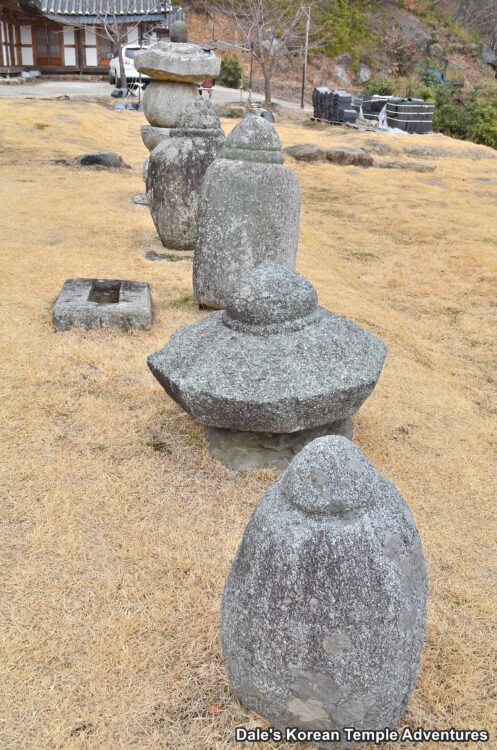
In Buddhism, the idea of life and death are explained through the doctrine of “Dependent Arising,” or “Pratītyasamutpāda,” in Sanskrit. This Buddhist doctrine states that all things are dependent on various conditions. To put it another way: all things in the world, including humans, are made up of separate and unique elements. This doctrine is based on the Buddhist principle of impermanence and non-self. And all these ideas have something in common; namely, they espouse the concept that all states of things are subject to constant change including birth and death.
So what then are these elements of change that comprise the human condition? There are four elements. They are earth, water, fire, and wind. When the conditions of our existence change, our body dies and the components of our condition disintegrate and become the four elements, once more. Beyond the human condition, these four elements are present in all things. There is nothing that exists that does not have some combination of these elements. A fifth element, space, is often added to the other four elements. This results in the The Five Elements.
The geometric shapes that make up the stupa are symbols of The Five Elements. The square base of the stupa is meant to symbolize the earth. The circular body represents water, while the triangular roof symbolizes fire. The crescent, and upturned flower at the top of the stupa, is meant to symbolize the wind. And finally, the solid diamond-shaped object at the top of the stupa symbolizes space. The stupa is symbolic of The Five Elements and the ongoing process of life and death. Plainly, the stupa symbolizes the process of impermanence that resides in us all. Ultimately, the stupa is a reminder to all living creatures of the inevitability that awaits us all.
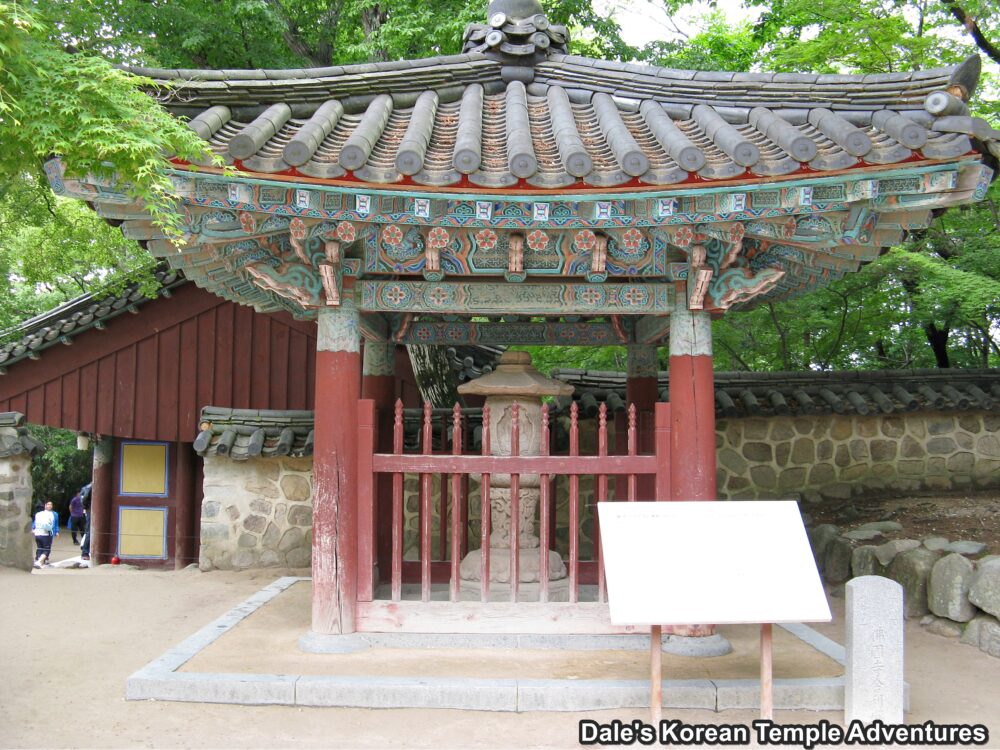
Bulguksa Temple Stupa
In total, there are nine stupas that are Korean National Treasures. And there are an additional fifty-six stupas that are Korean Treasures. Great examples of a Korean Buddhist stupa are the Stupa at Godalsa Temple Site in Yeoju and the East and North Stupa of Yeongoksa Temple in Gurye.
Specifically, however, I’m going to examine the Stupa of Bulguksa Temple in Gyeongju. The famed stupa is located to the left of the Biro-jeon Hall to the rear of the temple grounds at Bulguksa Temple. As for the design of the stupa, it’s divided into three parts. The pedestal, or base, of the stupa is made up of two semi-circular stones. Each stone is carved in a lotus flower design around its octagonal base stone. And on top of this base rests a drum-shaped pillar that’s designed like a cloud. The body of the stupa is divided into four sides. Each side has a recess that’s adorned with a Buddha or Bodhisattva. And surrounding these reliefs are swirling floral patterns. The roof of the stupa has twelve angles, and it’s hexagonal in shape. Sadly, part of the roof has been damaged, and only part of the finial of the stupa still remains. The stupa stands 2.1 metres in height, and it’s Korean Treasure #61.
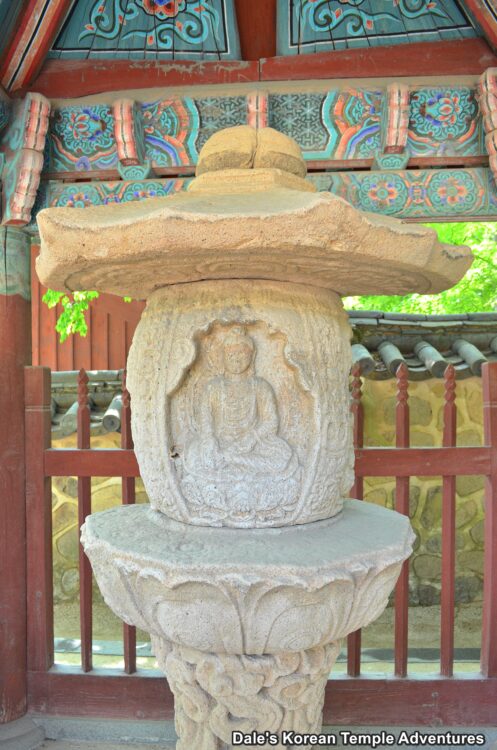
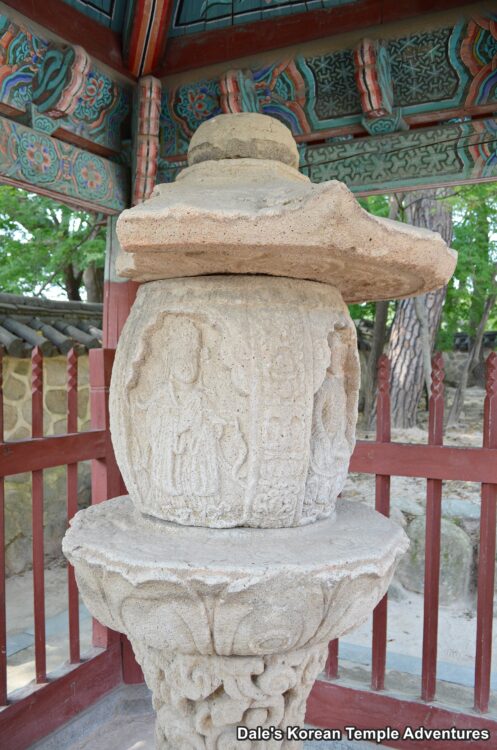
It’s believed that the Stupa of Bulguksa Temple was made during the early Goryeo Dynasty (918-1392). It’s believed to house either the sari (crystallized remains) of eight Buddhist monks or the sari of King Heongang of Silla’s wife. King Heongang’s wife became a Buddhist nun after the death of her husband. In 1905, during the Japan–Korea Treaty of 1905, the Stupa of Bulguksa Temple was taken out of Korea to Ueno Onshi Park in Tokyo, Japan by the Japanese. It wasn’t returned to Korea until 1933.
Conclusion
It’s truly amazing all the symbolism that’s packed into such a modest-looking structure like a Korean Buddhist stupa. The stupa’s symbolism reveals the ever changing condition at the core of our existence. So with a humble heart and a respectful mind, explore these lesser known objects of veneration at Korean Buddhist temples and hermitages.
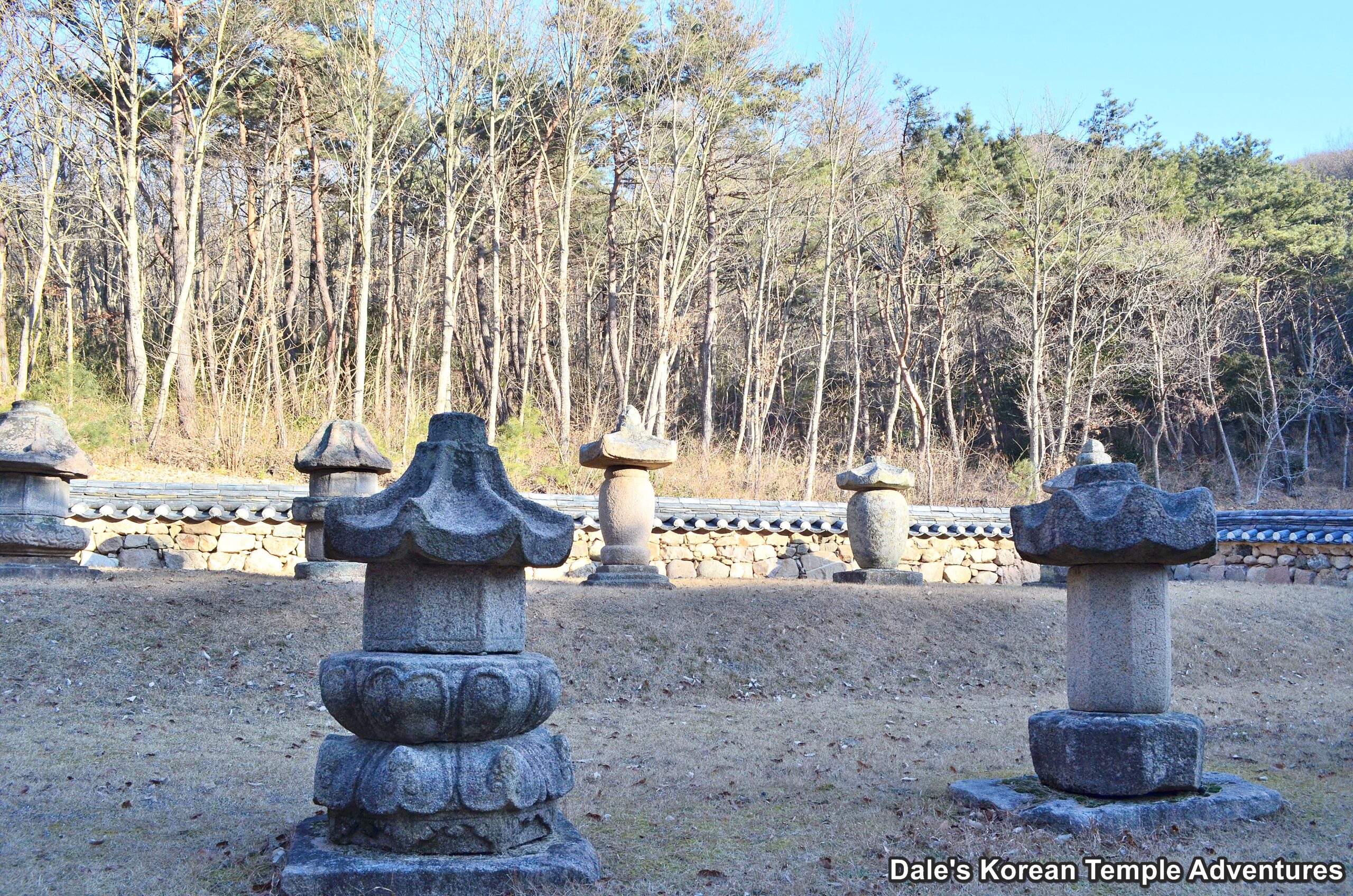


Recent comments